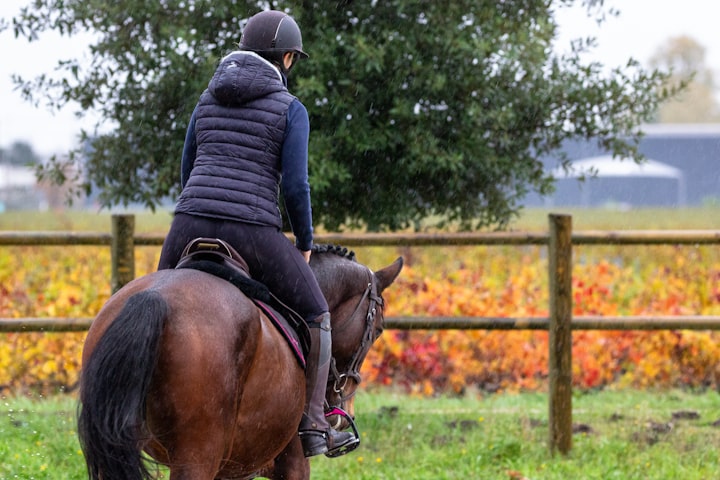Protecting Your Horses: Understanding Sycamore Poisoning and How to Get Rid of Seedlings
Why Sycamore Seedlings Pose a Threat to Your Horses and How to Remove Them

Sycamore poisoning in horses is a serious health issue that can result in colic, laminitis, and even death. Sycamore trees are found in many parts of the world, including Europe and North America, and are known for their distinctive mottled bark, large leaves, and the seeds they produce.
In the spring, it is not uncommon to see many sycamore seedlings on the ground. These seedlings can pose a significant risk to horses, as they contain a toxin called hypoglycin A, which can cause sycamore poisoning.
Hypoglycin A is found in the seeds, seedlings, and leaves of sycamore trees. When ingested by horses, it can cause a condition known as atypical myopathy. This condition affects the muscles and can cause severe muscle damage, leading to symptoms such as lethargy, stiffness, and difficulty breathing. In severe cases, atypical myopathy can be fatal.
One of the reasons why there are so many sycamore seedlings on the ground in the spring is due to the way the trees produce seeds. Sycamore trees are known as “mast” trees, which means they produce large quantities of seeds in certain years, followed by years of lower seed production. This natural cycle is thought to be a way for the trees to spread their seeds far and wide, ensuring their survival as a species.
The production of sycamore seeds can be influenced by a variety of factors, including weather conditions and the health of the tree. In some cases, a sycamore tree may produce an unusually large amount of seeds, resulting in a proliferation of seedlings on the ground in the spring.
While sycamore poisoning in horses is relatively rare, it is important for horse owners to be aware of the risk and take steps to protect their animals. This may include monitoring pastures for sycamore seedlings and removing any that are present, as well as providing horses with hay and other forage to reduce their exposure to sycamore seeds and leaves.
In addition to monitoring pastures, there are several ways to get rid of sycamore seedlings in pastures or areas where horses graze. Here are a few options:
- Hand-pulling: If the number of sycamore seedlings is small, hand-pulling them can be an effective way to remove them. This method involves grasping the seedling firmly at its base and pulling it out of the ground, being careful to remove as much of the root system as possible. It is important to wear gloves when hand-pulling sycamore seedlings, as the leaves and stems can cause skin irritation in some people.
- Mowing: Mowing the pasture or area where sycamore seedlings are present can help to keep them from growing and spreading. It is important to mow regularly, as sycamore seedlings can grow quickly and reach maturity within a few years if left unchecked.
- Herbicides: If the number of sycamore seedlings is large or if hand-pulling and mowing are not effective, herbicides may be used to control their growth. Herbicides containing glyphosate can be effective in killing sycamore seedlings, but care must be taken to avoid spraying other plants or areas where horses may graze. It is important to follow the label instructions carefully when using herbicides and to wear protective clothing and gear, including gloves, a face mask, and eye protection.
- Physical barriers: Another option for preventing sycamore seedlings from growing in pastures is to use physical barriers, such as geotextile fabric or landscape fabric, to prevent the seeds from taking root. These materials can be placed on the ground before the sycamore seeds have a chance to germinate, effectively blocking their growth.
It is important to note that removing sycamore seedlings is just one part of a comprehensive management plan to prevent sycamore poisoning in horses. Horse owners should also take steps to identify sycamore trees on their property and take appropriate measures to prevent access by horses, as well as providing horses with hay and other forage to reduce their exposure to sycamore seeds and leaves.
In the event that a horse does develop sycamore poisoning, prompt veterinary attention is essential. Treatment may involve supportive care, such as intravenous fluids and pain management, as well as measures to address any complications that may arise, such as laminitis.
Sycamore poisoning in horses is a serious health issue that can result in significant morbidity and mortality. The abundance of sycamore seedlings on the ground in the spring can increase the risk of atypical myopathy in horses, highlighting the importance of monitoring pastures and taking appropriate measures to protect animals. Horse owners should work closely with their veterinarians to develop a comprehensive management plan that addresses the risk of sycamore poisoning and takes into account the unique needs and characteristics of their animals.
About the Creator
Jane Smith
I'm a horsewoman who is angry about everything that is wrong with the horse world in the UK.
I am the woman who is not afraid to say what she thinks, and I'm not going to stop until the world is a better place for horses.






Comments
There are no comments for this story
Be the first to respond and start the conversation.